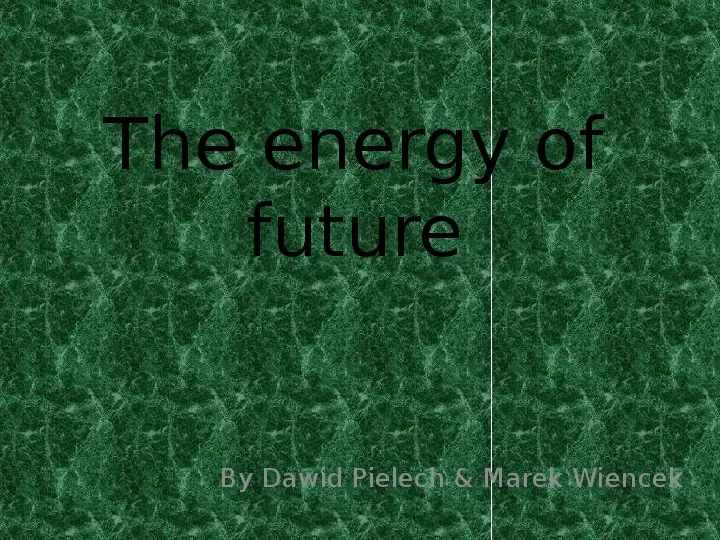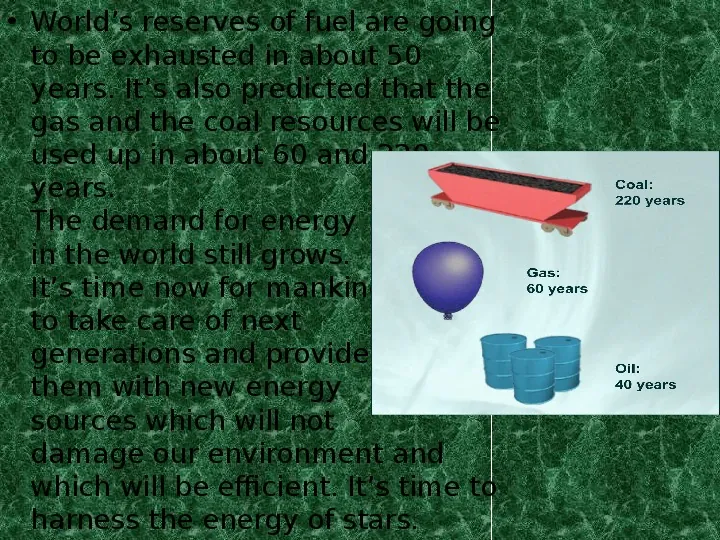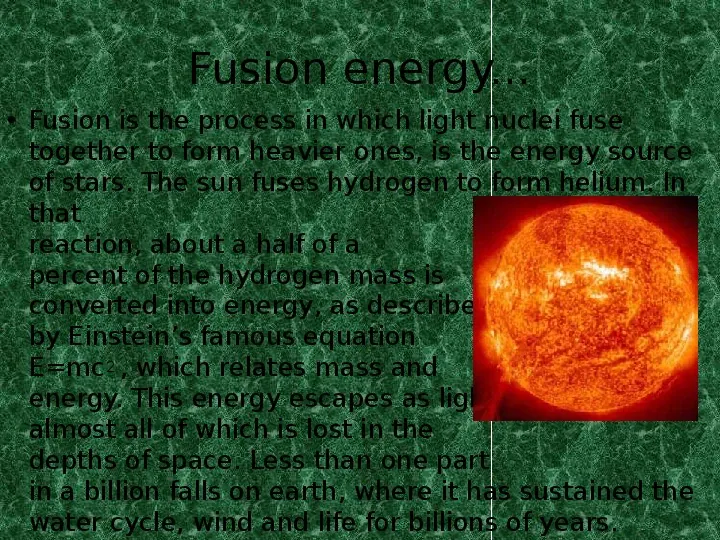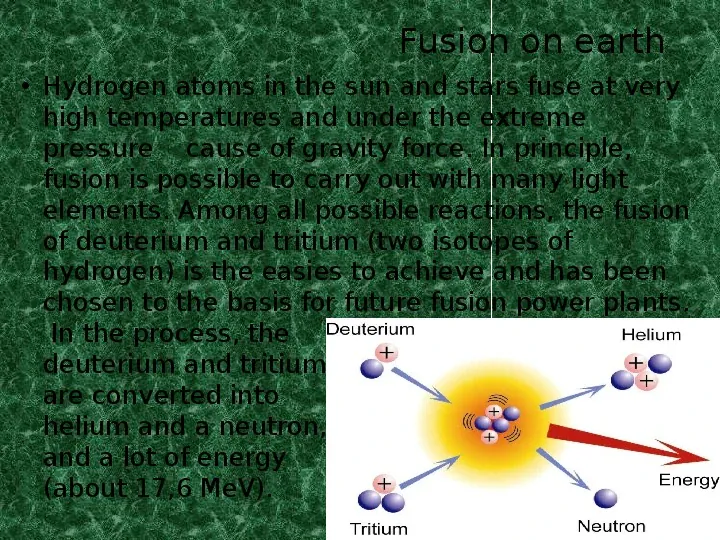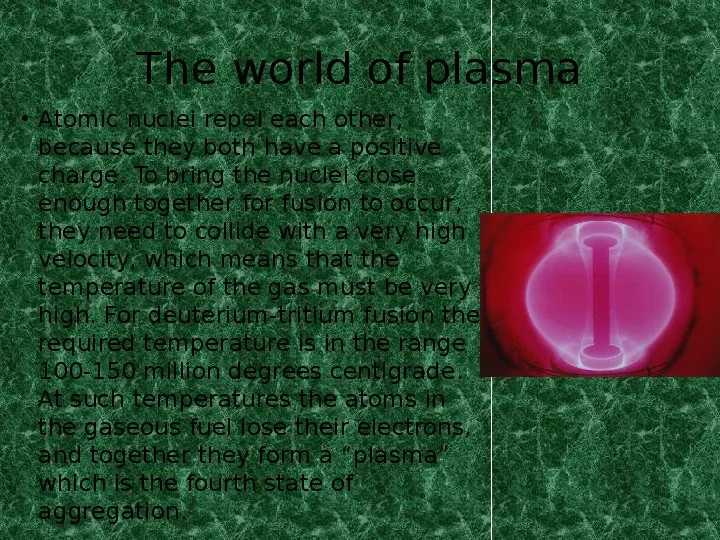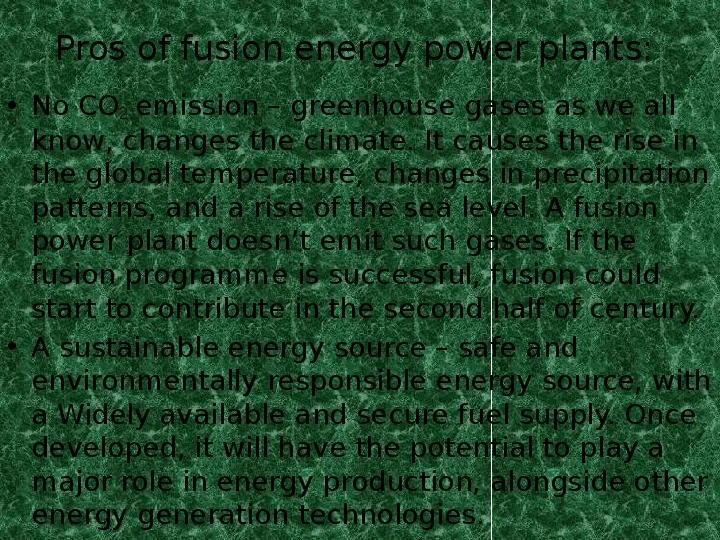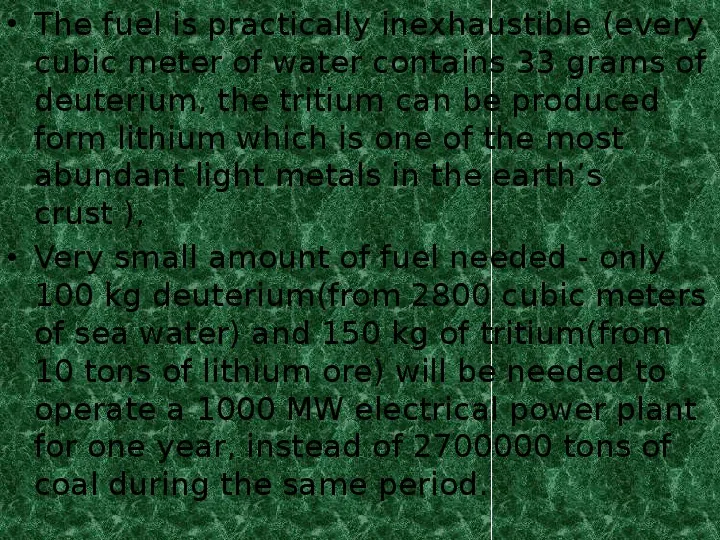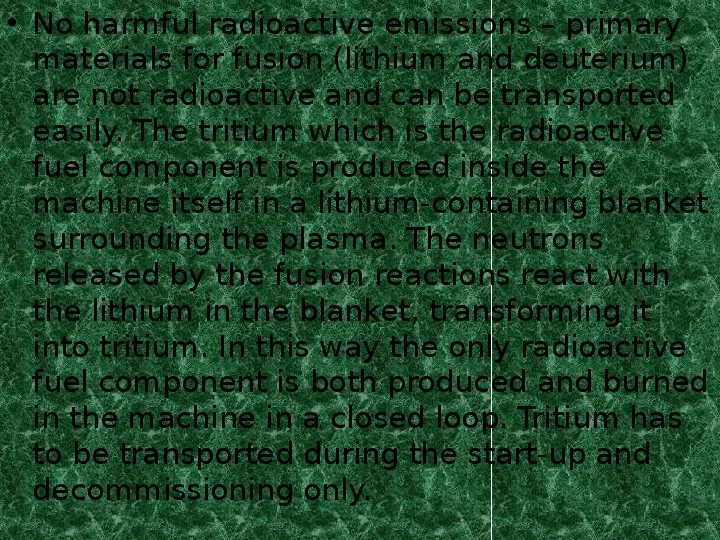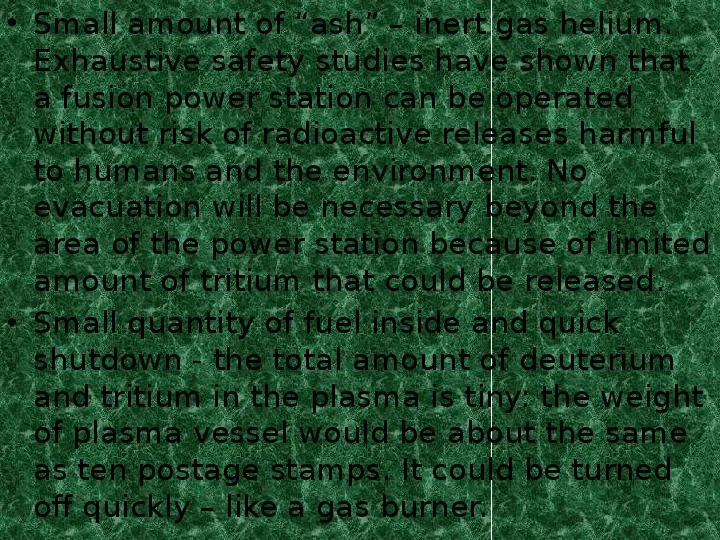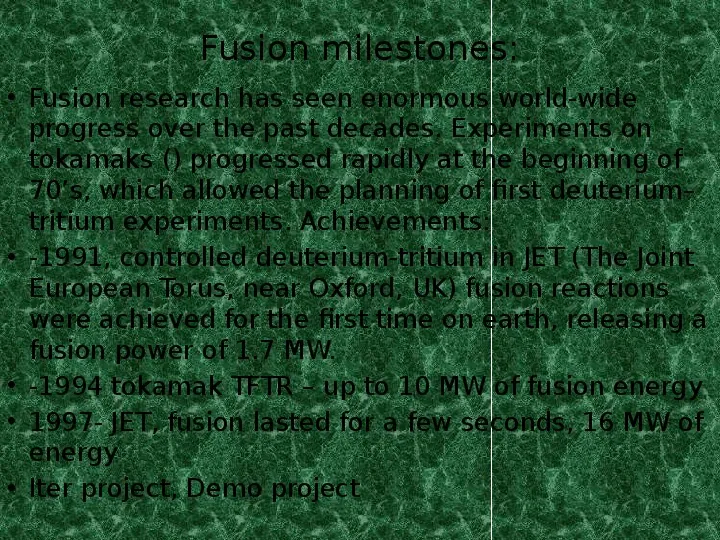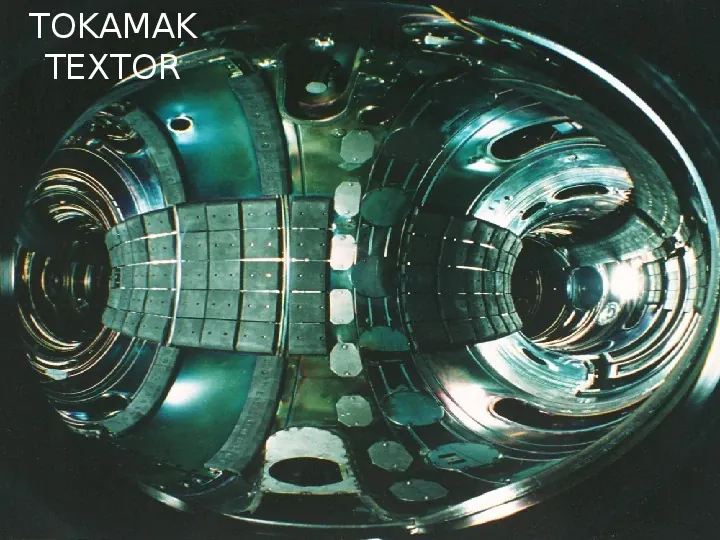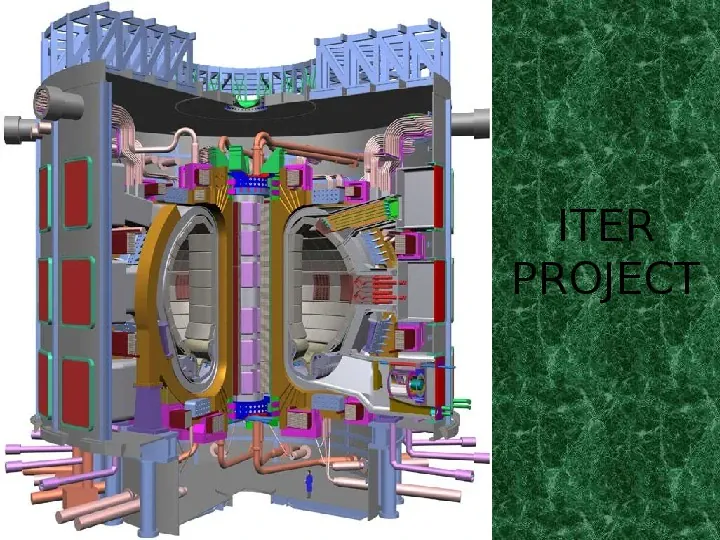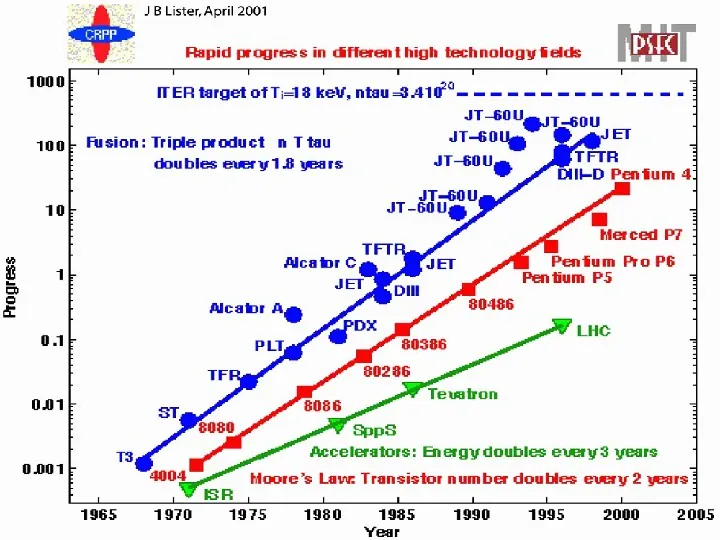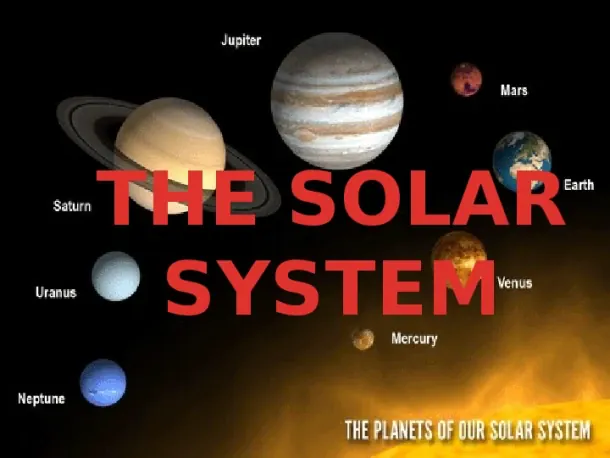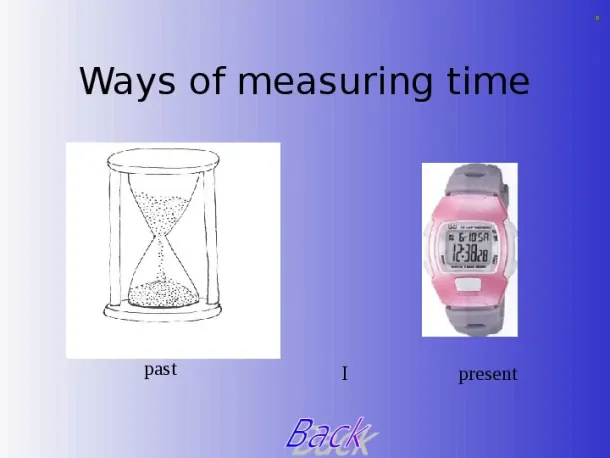Zobacz slidy
Treść prezentacji
Slide 1
The energy of future By Dawid Pielech Marek Wiencek
Slide 2
Worlds reserves of fuel are going to be exhausted in about 50 years. Its also predicted that the gas and the coal resources will be used up in about 60 and 220 years. The demand for energy in the world still grows. Its time now for mankind to take care of next generations and provide them with new energy sources which will not damage our environment and which will be efficient. Its time to harness the energy of stars.
Slide 3
Fusion energy... Fusion is the process in which light nuclei fuse together to form heavier ones, is the energy source of stars. The sun fuses hydrogen to form helium. In that reaction, about a half of a percent of the hydrogen mass is converted into energy, as described by Einsteins famous equation Emc2 , which relates mass and energy. This energy escapes as light, almost all of which is lost in the depths of space. Less than one part in a billion falls on earth, where it has sustained the water cycle, wind and life for billions of years.
Slide 4
Fusion on earth Hydrogen atoms in the sun and stars fuse at very high temperatures and under the extreme pressure cause of gravity force. In principle, fusion is possible to carry out with many light elements. Among all possible reactions, the fusion of deuterium and tritium (two isotopes of hydrogen) is the easies to achieve and has been chosen to the basis for future fusion power plants. In the process, the deuterium and tritium are converted into helium and a neutron, and a lot of energy (about 17,6 MeV).
Slide 5
The world of plasma Atomic nuclei repel each other, because they both have a positive charge. To bring the nuclei close enough together for fusion to occur, they need to collide with a very high velocity, which means that the temperature of the gas must be very high. For deuterium-tritium fusion the required temperature is in the range 100-150 million degrees centigrade. At such temperatures the atoms in the gaseous fuel lose their electrons, and together they form a plasma which is the fourth state of aggregation.
Slide 6
Pros of fusion energy power plants: No CO2 emission greenhouse gases as we all know, changes the climate. It causes the rise in the global temperature, changes in precipitation patterns, and a rise of the sea level. A fusion power plant doesnt emit such gases. If the fusion programme is successful, fusion could start to contribute in the second half of century. A sustainable energy source safe and environmentally responsible energy source, with a Widely available and secure fuel supply. Once developed, it will have the potential to play a major role in energy production, alongside other energy generation technologies.
Slide 7
The fuel is practically inexhaustible (every cubic meter of water contains 33 grams of deuterium, the tritium can be produced form lithium which is one of the most abundant light metals in the earths crust ), Very small amount of fuel needed - only 100 kg deuterium(from 2800 cubic meters of sea water) and 150 kg of tritium(from 10 tons of lithium ore) will be needed to operate a 1000 MW electrical power plant for one year, instead of 2700000 tons of coal during the same period.
Slide 8
No harmful radioactive emissions primary materials for fusion (lithium and deuterium) are not radioactive and can be transported easily. The tritium which is the radioactive fuel component is produced inside the machine itself in a lithium-containing blanket surrounding the plasma. The neutrons released by the fusion reactions react with the lithium in the blanket, transforming it into tritium. In this way the only radioactive fuel component is both produced and burned in the machine in a closed loop. Tritium has to be transported during the start-up and decommissioning only.
Slide 9
Small amount of ash inert gas helium. Exhaustive safety studies have shown that a fusion power station can be operated without risk of radioactive releases harmful to humans and the environment. No evacuation will be necessary beyond the area of the power station because of limited amount of tritium that could be released. Small quantity of fuel inside and quick shutdown - the total amount of deuterium and tritium in the plasma is tiny: the weight of plasma vessel would be about the same as ten postage stamps. It could be turned off quickly like a gas burner.
Slide 10
Fusion milestones: Fusion research has seen enormous world-wide progress over the past decades. Experiments on tokamaks () progressed rapidly at the beginning of 70s, which allowed the planning of first deuterium tritium experiments. Achievements: -1991, controlled deuterium-tritium in JET (The Joint European Torus, near Oxford, UK) fusion reactions were achieved for the first time on earth, releasing a fusion power of 1.7 MW. -1994 tokamak TFTR up to 10 MW of fusion energy 1997- JET, fusion lasted for a few seconds, 16 MW of energy Iter project, Demo project
Slide 11
TOKAMAK TEXTOR
Slide 12
ITER PROJECT
Slide 14
Thanks for watching
Dane:
- Liczba slajdów: 14
- Rozmiar: 1.49 MB
- Ilość pobrań: 3385
- Ilość wyświetleń: 20233
